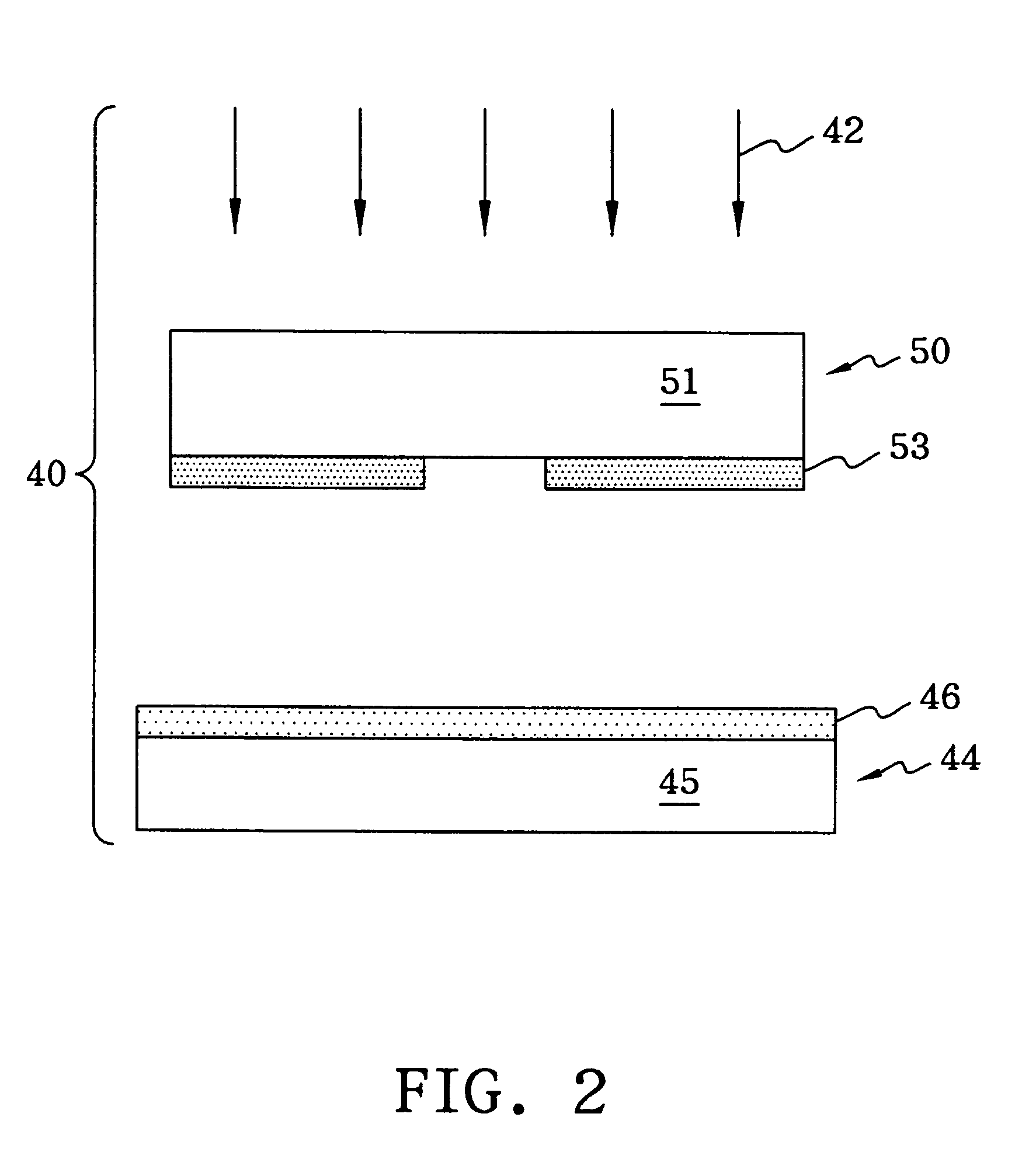Mask for reducing proximity effect
a mask and proximity effect technology, applied in the field of masks for reducing proximity effects, can solve the problems of lithographic process, limit resolution r cannot be reduced by only enlarging, and mask error enhancement factor (meef) is too large, so as to improve image contrast and mask error enhancement factor (meef), the depth of focus is further improved, and the resolution is extended.
- Summary
- Abstract
- Description
- Claims
- Application Information
AI Technical Summary
Benefits of technology
Problems solved by technology
Method used
Image
Examples
first embodiment
[0030]FIG. 3(a) is a close-up diagram for the mask 50 for forming 0.12-micrometer isolation trenches according to the present invention. The pattern of the mask 50 comprises a plurality of line-shaped features 52, a plurality of groups of first assist features 60 (each group of first assist features 60 positioned between two adjacent line-shaped features 52), and a plurality of second assist features 70 positioned between the line-shaped features 52 and the groups of first assist features 60. Each of the line-shaped features 52 corresponds to one isolation trench to be formed on the silicon wafer 44. The first assist feature 60 is approximately rectangular in shape and the width 62 at the direction perpendicular to the line-shaped feature 52 is larger than the length 64 at the direction parallel to the line-shaped feature 52. Since the first assist feature 60 is arranged in perpendicular to the line-shaped feature 52 and looks like a ladder, it is named a ladder-shaped assist featur...
second embodiment
[0037]FIG. 8 is a close-up diagram of the mask 50 for forming the 0.12-micrometer isolation trench according to the present invention. The pattern of the mask 50 comprises a plurality of line-shaped features 52 and a plurality of groups of third assist features 90, wherein each group of third assist features is positioned between two adjacent line-shaped features 52. In order to keep the third assist feature 90 non-resolvable, the space 92 between the line-shaped feature 52 and the group of the third assist feature 90 is larger than the width 54 of the line-shaped feature 52. The length 94 of the third assist feature 90 is preferably smaller than two-fifths of the wavelength but larger than one-fourth of the wavelength of an exposure source. The space 96 between two adjacent third assist features 90 is larger than the length 94 of the third assist feature 90. The third assist feature 90 can be approximately rectangular in shape and the width 98 at the direction perpendicular to the ...
PUM
| Property | Measurement | Unit |
|---|---|---|
| width | aaaaa | aaaaa |
| wavelength | aaaaa | aaaaa |
| wavelength | aaaaa | aaaaa |
Abstract
Description
Claims
Application Information
 Login to View More
Login to View More - R&D
- Intellectual Property
- Life Sciences
- Materials
- Tech Scout
- Unparalleled Data Quality
- Higher Quality Content
- 60% Fewer Hallucinations
Browse by: Latest US Patents, China's latest patents, Technical Efficacy Thesaurus, Application Domain, Technology Topic, Popular Technical Reports.
© 2025 PatSnap. All rights reserved.Legal|Privacy policy|Modern Slavery Act Transparency Statement|Sitemap|About US| Contact US: help@patsnap.com



